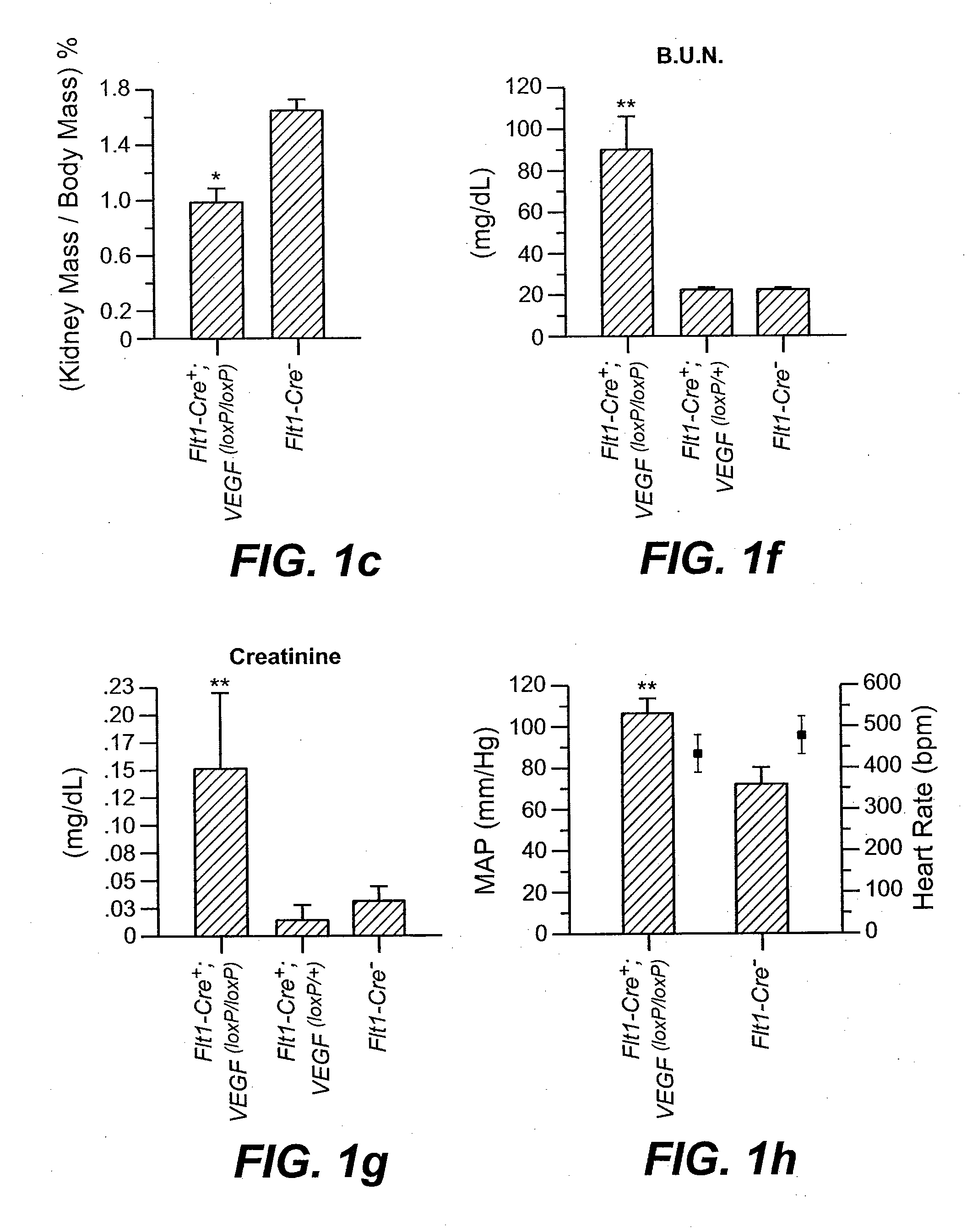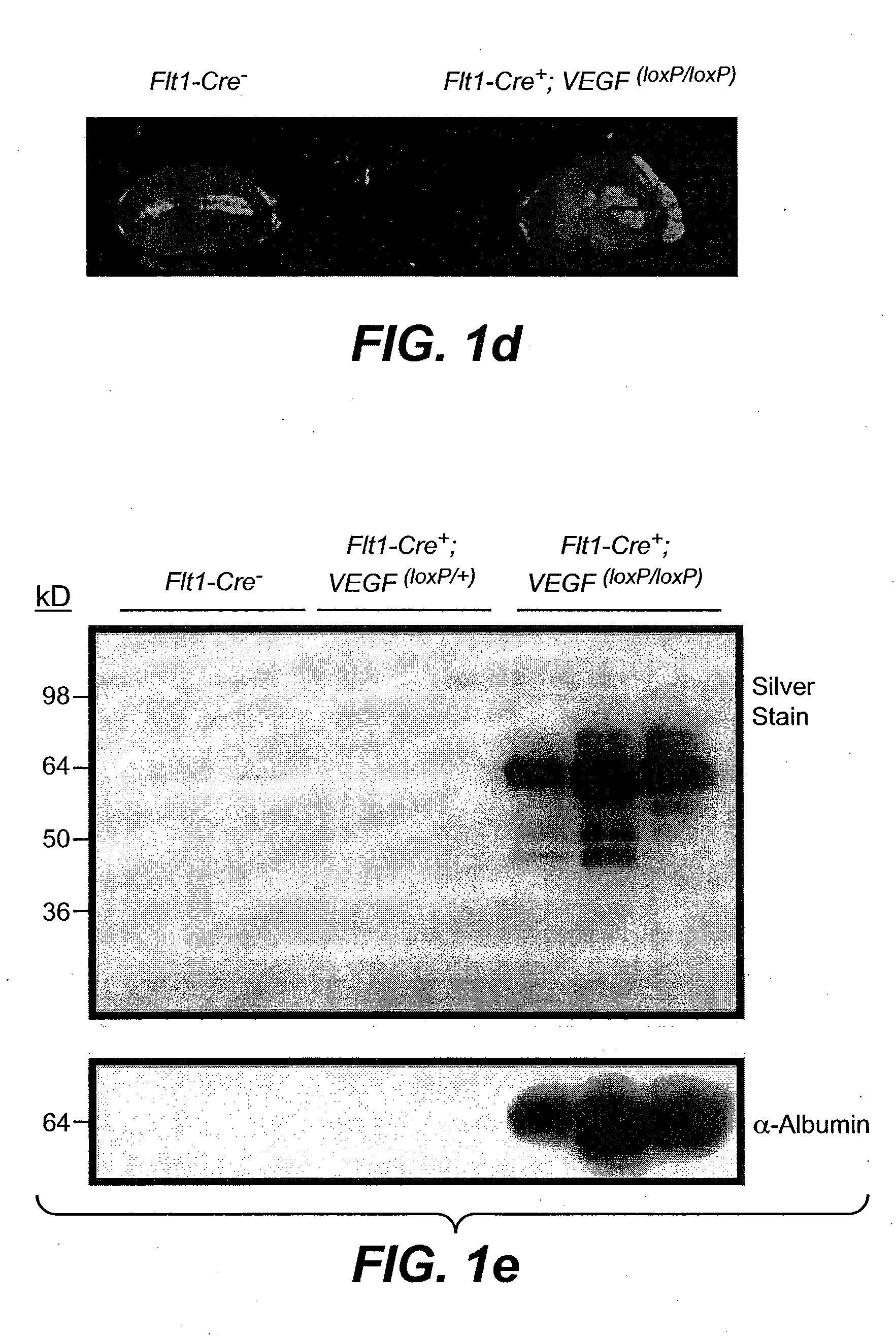Methods for Treating Kidney Disorders
a kidney disorder and treatment method technology, applied in immunological disorders, metabolism disorders, antibody medical ingredients, etc., can solve the problems of glomerular sclerosis and end-stage renal failure, glomerular sclerosis, and the nature of vegf receptors
- Summary
- Abstract
- Description
- Claims
- Application Information
AI Technical Summary
Benefits of technology
Problems solved by technology
Method used
Image
Examples
example 1
Identification of a Novel Autocrine Regulatory Loop by VEGF-A in Kidney Mesangial Cells Mediated by Flt1 / VEGFR-1
[0212]We generated transgenic mice whereby the VEGF gene was ablated in cells expressing the VEGF receptor-1 (Flt1 / VEGFR-1). We found that VEGF-A gene ablation in kidney mesangial cells resulted in progressive renal failure characterized by proteinuria, glomerular sclerosis, hypertension and death in mice aged 1-3 months. Affected glomeruli displayed reduced VEGF-A expression in podocytes and increased numbers of inflammatory cells, immune complex depositions and complement activation. Interference with the autocrine loop in mesangial cells induces distinct renal changes reminiscent of a subset of human kidney pathologies associated with reduced renal VEGF levels. In vitro, VEGF-A- and Flt-1-deficient mesangial cells displayed decreased cell survival and a shift in gene expression towards ECM synthesis and reduced matrix degradation. These findings identify a novel autocri...
example 2
VEGFR Selective Variants of VEGF
[0255]Generation and characterization of VEGF variants that selectively bind and activate a specific VEGF receptor (such as KDR or Flt-1) have been known in the art and described in, for example, Li et al. J. Biol. Chem. 275:29823 (2000); Gille et al. J. Biol. Chem. 276:3222-3230 (2001); PCT publications WO 00 / 63380 and 97 / 08313; and U.S. Pat. No. 6,057,428, the disclosure of which are expressly incorporated herein by reference.
[0256]Specifically, a VEGF variant with high selectivity for the Flt-1 receptor was generated by combining four mutations that greatly affected KDR but not Flt-1 binding. Mutation of Ile 43, Ile 46, Gln 79 and / or Ile 83 showed that the side chains of these residues are critical for tight binding to KDR but unimportant for Flt-1-binding. Li et al. (2000) supra. A Flt-sel variant was constructed with alanine substitutions at positions Ile 43, Ile 46, Gln 79 and Be 83, using site directed mutagenesis methods described by Kunkel et...
PUM
| Property | Measurement | Unit |
|---|---|---|
| vascular permeability | aaaaa | aaaaa |
| endothelial cell adhesion | aaaaa | aaaaa |
| concentration | aaaaa | aaaaa |
Abstract
Description
Claims
Application Information
 Login to View More
Login to View More - R&D
- Intellectual Property
- Life Sciences
- Materials
- Tech Scout
- Unparalleled Data Quality
- Higher Quality Content
- 60% Fewer Hallucinations
Browse by: Latest US Patents, China's latest patents, Technical Efficacy Thesaurus, Application Domain, Technology Topic, Popular Technical Reports.
© 2025 PatSnap. All rights reserved.Legal|Privacy policy|Modern Slavery Act Transparency Statement|Sitemap|About US| Contact US: help@patsnap.com



